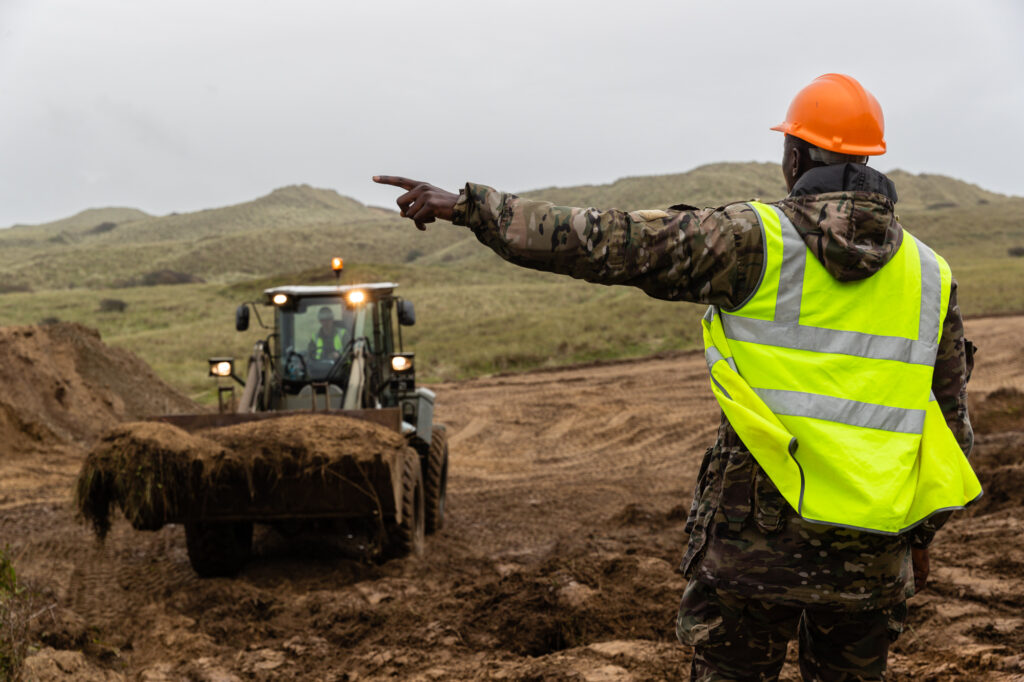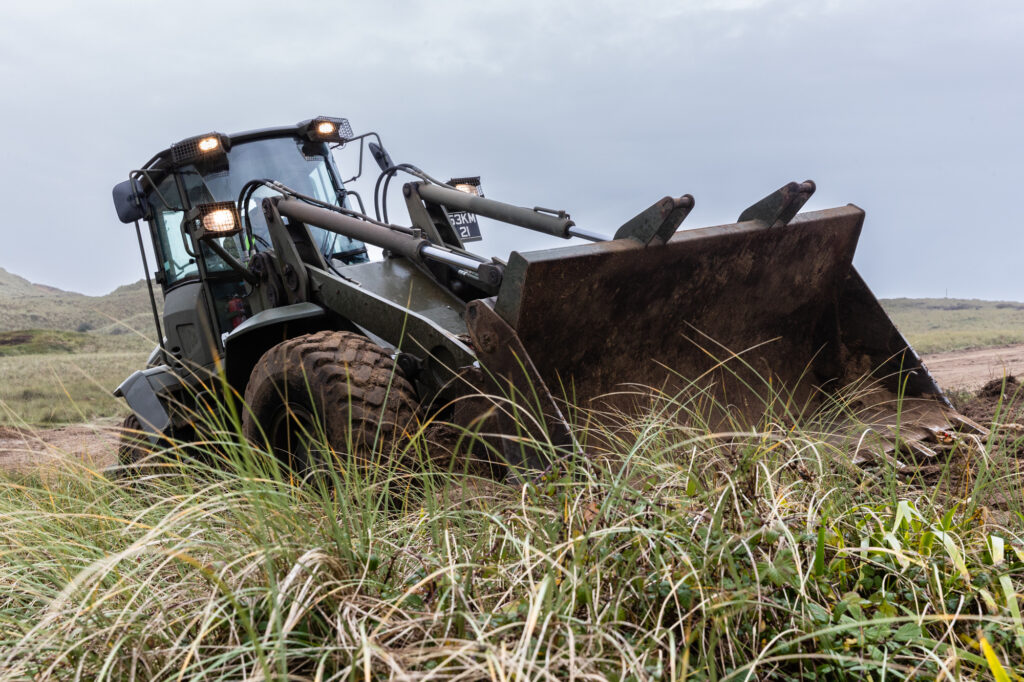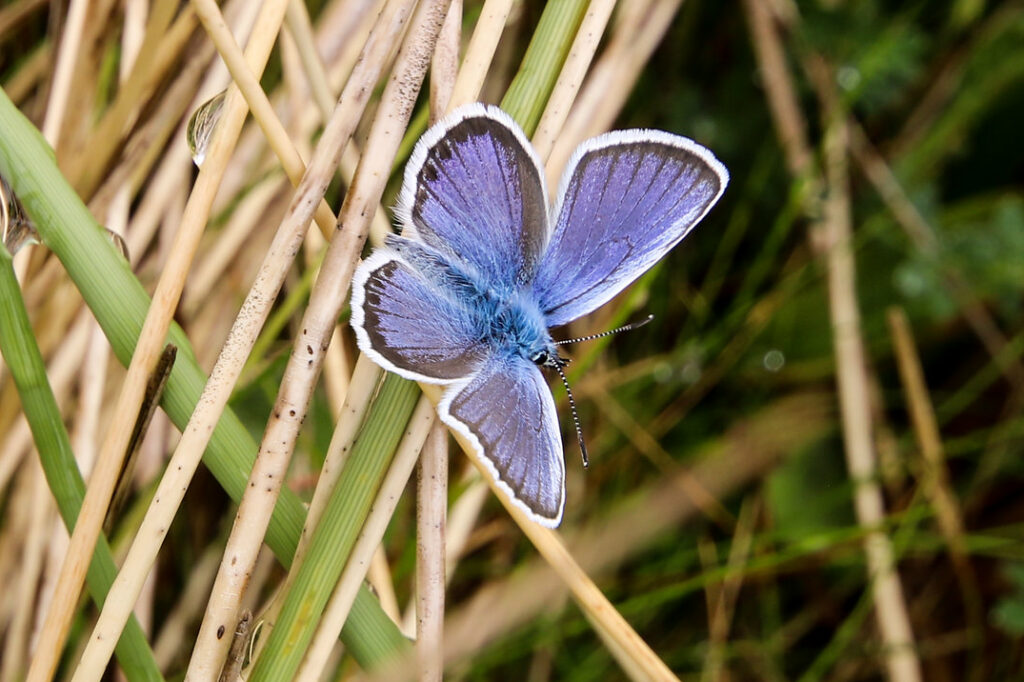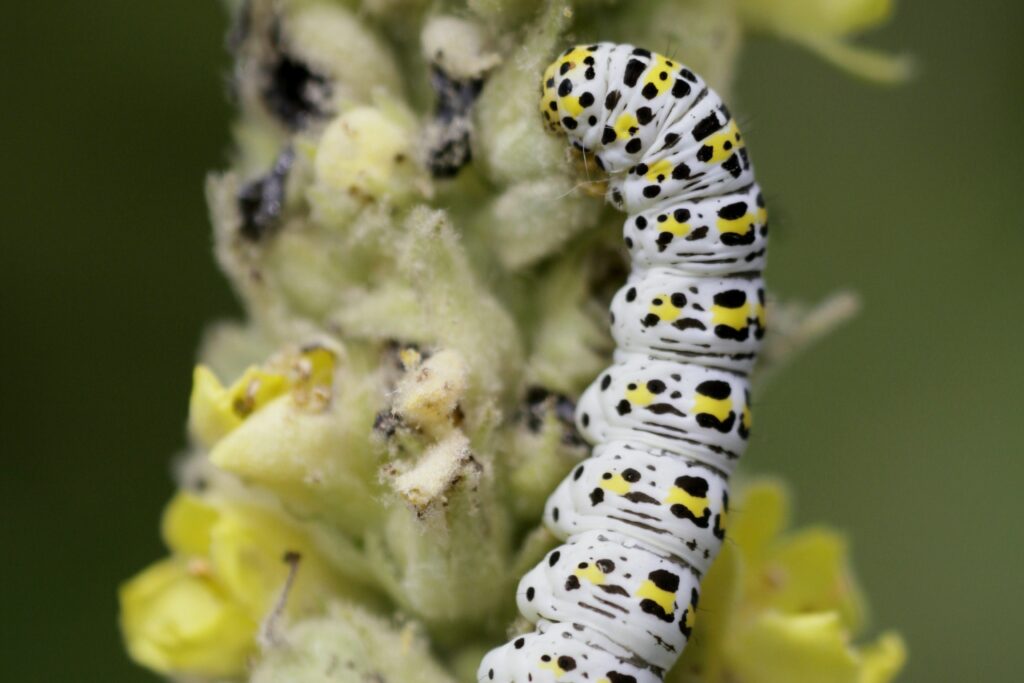
I’m a Reservist with the British Army’s 232 Port Squadron, 165 Port and Maritime Regiment Royal Logistic Corps (RLC), and I recently volunteered for the Penhale Dunes Dynamic Dunescape support exercise as I wanted to contribute to a unique local conservation project in Cornwall. Dynamic Dunescape is an ambitious conservation project aiming to restore 7,000 hectares of sand dunes in England and Wales.
A joint effort between DIO, Cornwall Wildlife Trust and the British Army the exercise has helped to restore sand dune habitats at Penhale Training Area in Cornwall, which is situated within Penhale Dunes Special Area of Conservation (SAC). This is the second year that the exercise has taken place because it was so successful last time.
The benefits of volunteering
I volunteered for the exercise as it gave me the opportunity to spend more time operating JCBs as part of a very small team, which meant there was more individual time to operate them. I wouldn’t normally get the chance as a Reservist to operate a JCB for three whole days in a row by myself, with someone just guiding and directing the work I’m doing.

The other bonus was that this exercise was local for me and I didn’t have to travel very far, as sometimes we travel many hours to military training areas to do our training.
Penhale Dunes Special Area of Conservation (SAC)
The UK Defence Training Estate is home to a diverse range of habitats and wildlife species, many of which have been granted protected status. DIO is committed to sustainably managing land used for military training and balancing military needs with ecological conservation and joint projects of this nature have a real, positive impact on the ecology of the training estate.
Penhale’s coastal sand dune system hosts a wealth of native wildlife, from reptiles like the common lizard and adder to delicate orchids, the rare silver-studded blue butterfly, and the silvery leafcutter bee. These ‘dune-specialist’ species thrive in our coastal landscapes when there are plenty of areas of bare sand available for burrowing into or hunting on top of, as well as areas of low grassland in which to hide or to produce flowers.

How military training supports ecological conservation
A significant part of Penhale Dunes SAC is situated within Penhale Training Area, which DIO maintain in partnership with Cornwall Wildlife Trust, who oversee the environmental aspects of the training area. The work was completed as part of a machinery training programme for the Regiment and is a prime example of the positive role military training can play in conservation efforts on the Defence estate.
To ensure work could begin safely, DIO worked with Army colleagues to provide unexploded ordnance clearance on the dunes. Me and my team then removed areas of overgrown scrub and exposed bare sand on overgrown dunes.
In areas of low scrub, plant material was raked out, and areas of dense mature scrub like blackthorn and hawthorn were plucked and pulled from the dunes. In a previously damaged area that is now suffering from lower plant biodiversity than the surrounding dunes, diggers were used to strip away the top layer of turf to expose patches of bare sand. This will create better conditions for sand dune wildlife.
Reflecting on the exercise and personal success
Our colleagues at Cornwall Wildlife Trust were really pleased with last year’s work. The clearance work successfully reduced the cover of thick blackthorn scrub and Great mullein has been one of the first plants to colonise the area adding a splash of bright yellow to the area. The site has also seen Common restharrow appearing. Exmoor ponies have enjoyed rolling in the bare sand patches too, and both the ponies and cattle have been grazing the regrowth in the area helping to keep the area open and prevent scrub regrowing. I hope our work this year reaps the same success next year.

3 comments
Comment by Toby O posted on
What a great article. It’s always lovely to see the positive work the Army does in partnership with other MOD branches (DIO) and local communities.
Comment by Lucy Wall posted on
It would be great to find out about more conservation projects that we, as members of the Armed Forces, can get involved with, particularly on our estates.
Comment by john edgell posted on
Give it back to allow better acess to the coastpath. Hardly ever see the place used and it is in a very poor state of repair. Broken fences so easy to walk in. MOD blocks access to wonderful beaches. If it cant be given back put a proper path through it so it can be accessed from the caravan club site without the massive detour.